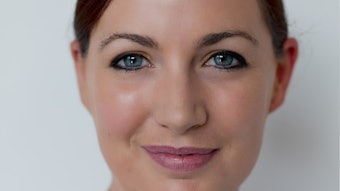
DNA-based skin care is expected to expand at a CAGR of 6.8% from 2025 to 2030, according to Grand View Research. The firm attributes this to several factors, including the rising prevalence of skin conditions and growing consumer interest in personalized skin care. Advances in genomics and biotechnology are enabling the development of these products, according to the source.
In relation, the global epigenetics market, including DNA methylation, histone modification and other technologies, is estimated at US $2.73 billion in 2025 and is forecast to reach $7.72 billion by 2034 (12.30% CAGR 2025-2034), Precedence Research reports. DNA methylation held the largest share in 2024. In this report, primary applications ranged from oncology, neuroscience and developmental biology, to drug discovery and personalized medicine; although beauty innovators have transferred epigenetics into anti-aging skin care.
In September 2024, Beiersdorf rolled out its rejuvenating Eucerin Hyaluron-Filler Epigenetic Serum featuring Epicelline, an ingredient said to address signs of aging by reactivating "youth genes" through the reversal of DNA methylation. For this particular product, the company analyzed skin samples from more than 1,000 people, including measuring 850,000 methylation sites to understand which epigenetic markers were associated with skin aging. Beiersdorf has been researching epigenetics for more than 16 years, the company reports.
Rewinding further, The Estee Lauder Cos. (ELC) is another major multinational that has long (15+ years) focused on epigenetics for skin care. Its Advanced Night Repair Synchronized Recovery Complex debuted in 2009 and, according to the Moodie Davitt report, was promoted to "support clock genes and the cells’ natural synchronization process."
The product features ELC's "one-in-60-million night peptide," which is designed to optimize skin's natural overnight repair process to help skin cells' clock genes maximize their own DNA repair. Indeed, according to a paper in Clinical Epigenetics, peptides are able to influence different aspects of epigenetic regulation, including both DNA methylation and histone modifications, depending on the peptide.
While these and other beauty innovators have targeted DNA methylation as an approach to anti-aging, new work published last month in Nature Aging may redirect some of these efforts. Research from the University of California San Diego School of Medicine suggests that epigenetic changes (such as DNA methylation) previously thought to drive aging may instead be a symptom of a more fundamental process — random genetic mutations. While more research is needed, this challenges the prevailing idea that targeting DNA methylation reverses could stop or reverse aging.
Epigenetic Modification Findings
As the article abstract explains, researchers examined data from more than 9,300 patients using two major genomics datasets, the Cancer Genome Atlas and the Pan-Cancer Analysis of Whole Genomes. The study specifically focused on DNA methylation marks, which have previously been used to build epigenetic clock models to predict calendar age.
Since methylation promotes mutations, the researchers hypothesized that methylation changes observed with age should reflect cumulative mutations and yield comparable aging estimates. However, the analysis found mutations coincided with changes in methylation at both methylated sites and other sites.
Indeed, UC San Diego Today reported that a single somatic mutation can initiate a "cascade" of epigenetic changes across regions of the genome, effectively linking biological aging measurements (epigenetic clocks) to mutation accumulation. “Epigenetic changes are intricately and predictably tied to random genetic mutations,” explained Zane Koch, a Ph.D. candidate and first author of the study, in the report.
Hitting 'Snooze' on DNA Methylation Target to Rewind the Age Clock
Could these findings redirect efforts to reverse or halt skin's epigenetic clocks? Trey Ideker, Ph.D., co-corresponding author on the study, seems to think so. In the UC San Diego report, he stated: “This suggests that such approaches may only treat a symptom of aging, not its root cause.”
He added that if mutations are in fact the primary drivers of aging, anti-aging therapies will face even greater challenges since they are are essentially chasing a moving target; i.e., random genetic mutations, which are also permanent and cumulative over time.
"Skin care companies have been talking about epigenetic changes contributing to aging for quite a while. This finding is very interesting and novel," said industry expert Mindy Goldstein, Ph.D. "This is the first time that studies are finding a link between somatic mutations, which are typically random, and epigenetic changes."
She continued, "Companies in the industry usually talk about the methylation of genes that control their on/off functions. There are quite a few ingredients that are available that are addressing modulating the epigenetic changes in DNA or genes that affect collagen, elastin, wound repair, moisturization and the skin barrier which lead to skin aging. These ingredients can be peptides, antioxidants (like resveratrol), plant based extracts, vitamin C, niacinamide, hyaluronic acid, retinols and miRNAs (interference RNAs).
"Epigenetic skin care may offer a transformative approach to skin health by targeting the root causes of aging and environmental damage, paving the way for more personalized and effective treatments."
Unifying Theories on Aging
The good news is this study bridges two major theories in aging science:
- Somatic Mutation Theory, which focuses on the accumulation of random DNA mutations over time as a primary driver of aging; and
- Epigenetic Clock Theory, which views predictable, reversible epigenetic modifications as aging markers and potential drivers.
The presented findings indicate that the two processes are not as independent as previously thought. Instead, mutations appear to drive epigenetic changes, revealing a unified mechanism underlying aging.
Mutations x Epigenetics: More Research is Needed
While the study advances the understanding of molecular aging, its authors caution that more research is necessary to fully explore the dynamics between mutations and epigenetics. Their findings suggest a need to revisit how anti-aging interventions are designed.
Co-corresponding author Steven Cummings, Ph.D., summarized the challenge: “If somatic mutations are the fundamental driver of aging … it’s going to be a lot harder to reverse aging than we previously thought. This shifts our focus from programmed aging to random, cumulative changes over time.”
New Challenges, New Opportunities
This research could mark a pivotal point in anti-aging science, offering challenges as well as new avenues for exploration. It also signals the need for innovative approaches to mitigate the effects of mutations and better understand their long-reaching consequences on cellular aging.
In fact, our industry may be innovating a solution as we speak. It's only a matter of time.










